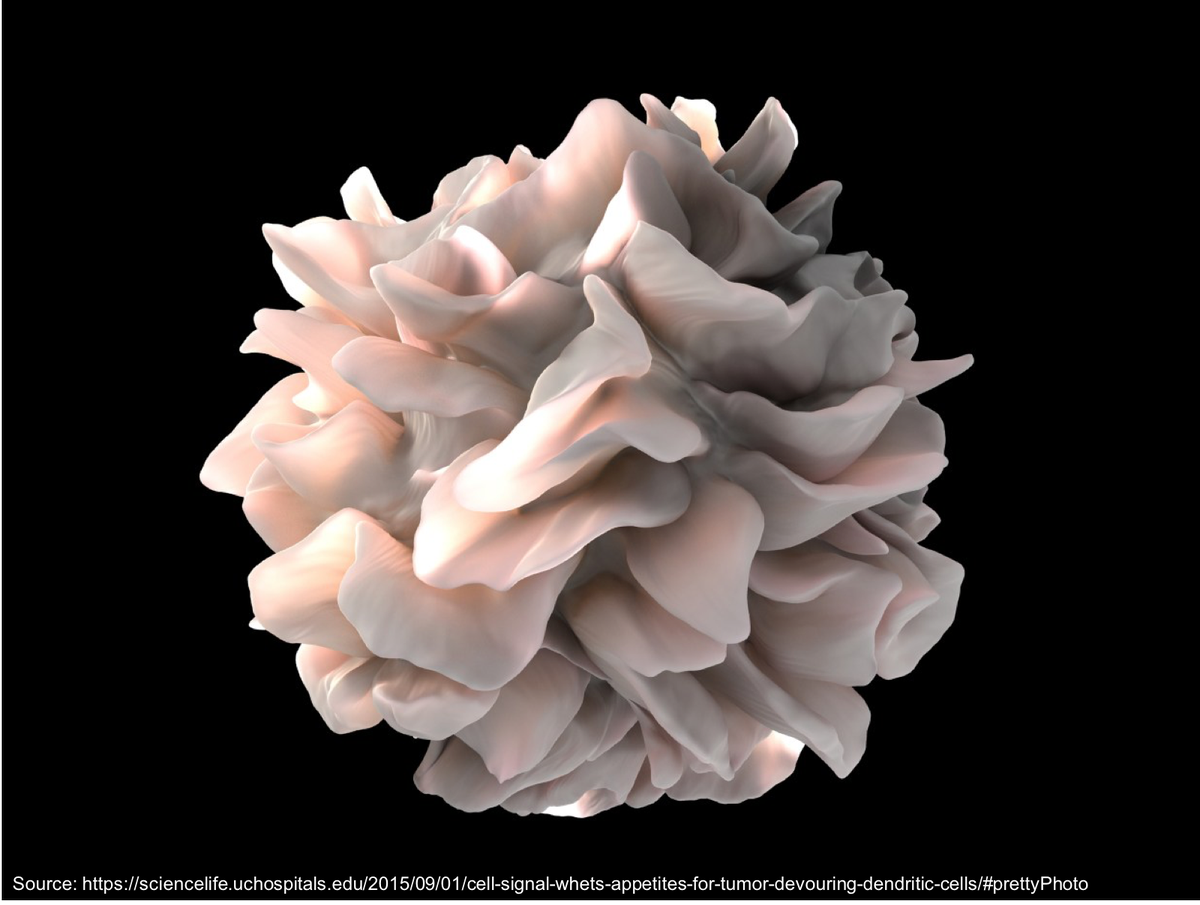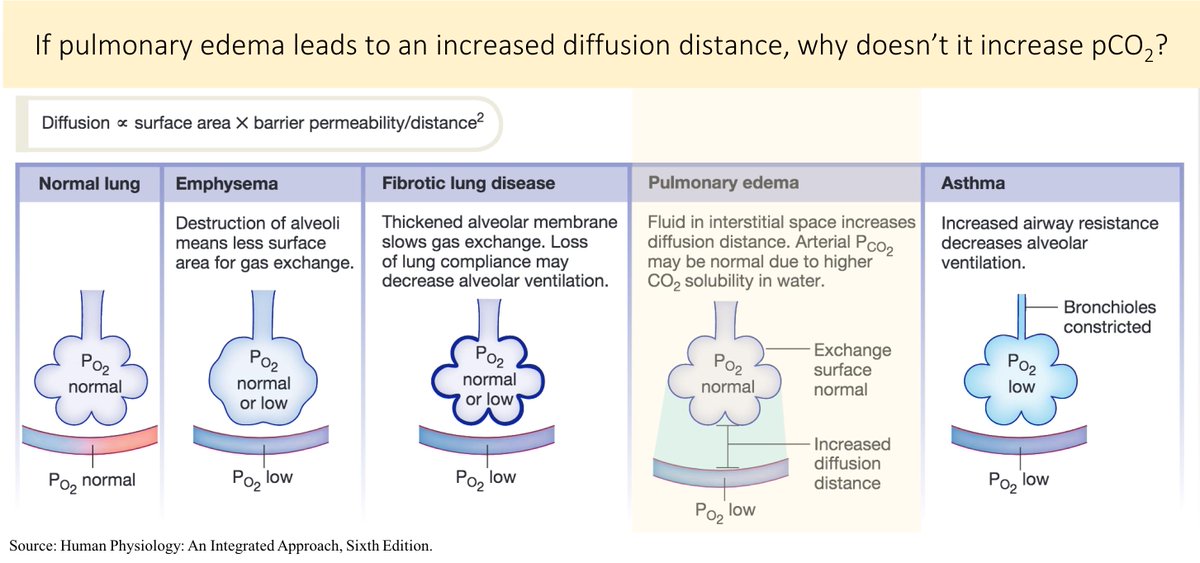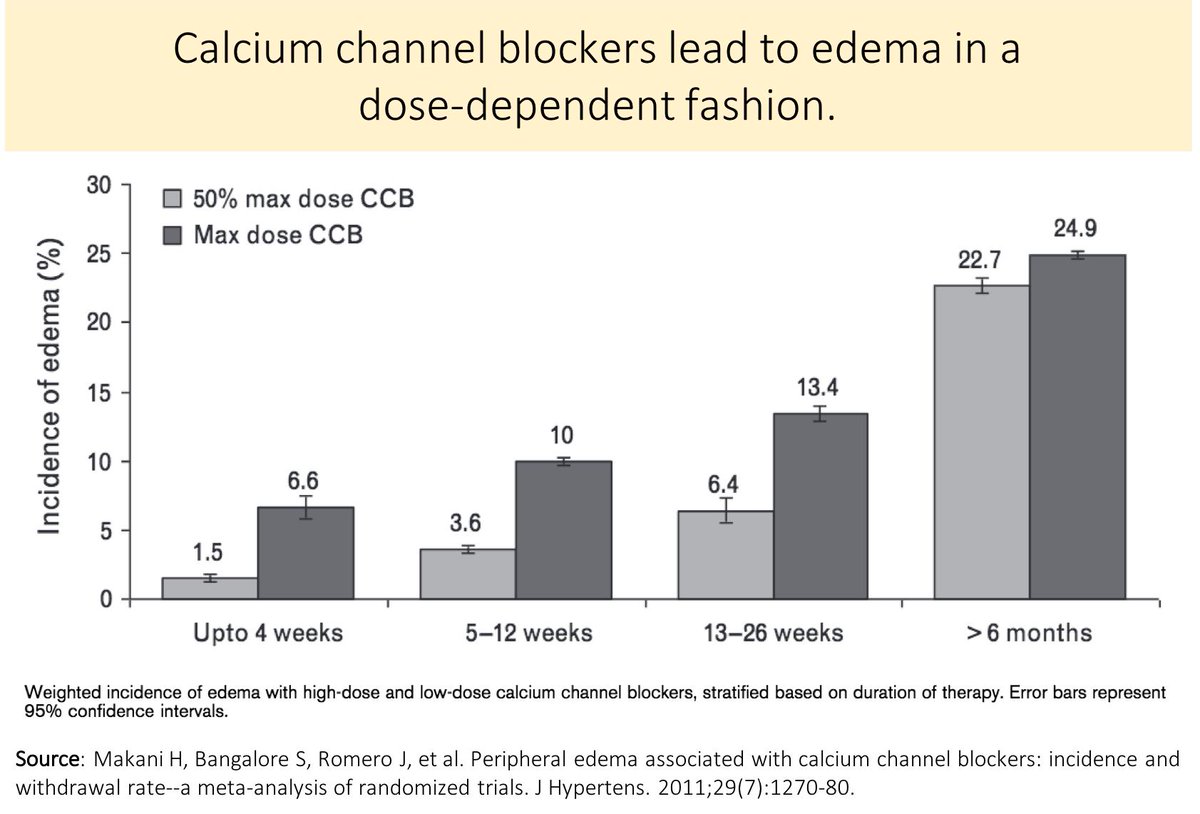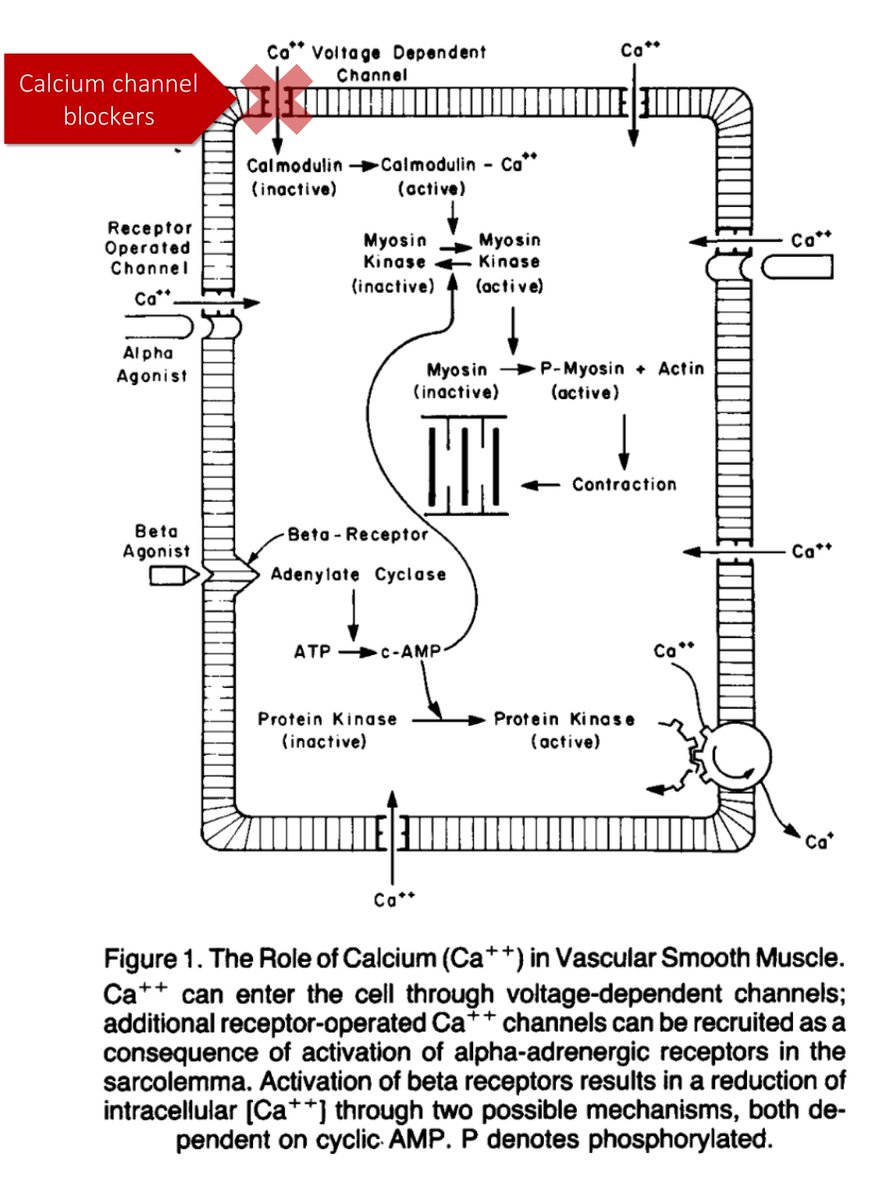Before getting to some potential answers, a question:
In GCA, where does the inflammation initiate? Is it:
*from the vessel lumen, through damage to the endothelial wall (aka INSIDE-out); or
*through the adventitia with subsequent media/intima involvement (aka OUTSIDE-in)?
Inflammation in GCA likely initiates OUTSIDE-in.
Why? Inflammatory cells (e.g., T cells) require low flow states to deposit in tissues. This typically occurs in post-capillary venules.
In medium/large arteries, flows may be too fast for adhesion.
ncbi.nlm.nih.gov/pubmed/15122201
So, in medium/large arteries, inflammatory cells need a different route of entry: the vasa vasorum!
Arteries with vasa vasorum can accumulate inflammatory cells through the adventitia.
As you might expect, arteries affected by GCA have vasa vasorum.
ncbi.nlm.nih.gov/pubmed/23216413
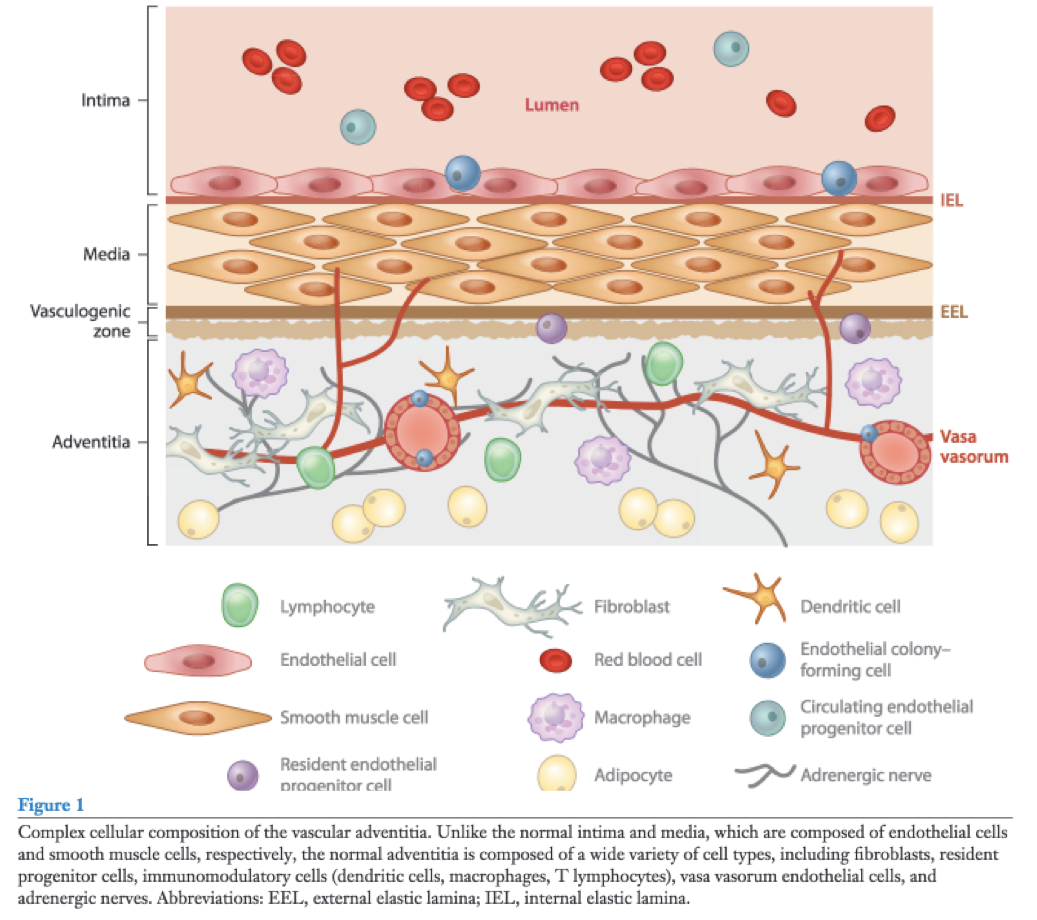
Vasa vasorum is one key. Another key: dendritic cells (DCs).
Activation of (DCs) is an early step in the pathogenesis of GCA. It precedes the infiltration of inflammatory cells.
Where do these DCs reside? In the adventitia!
ncbi.nlm.nih.gov/pubmed/14734523
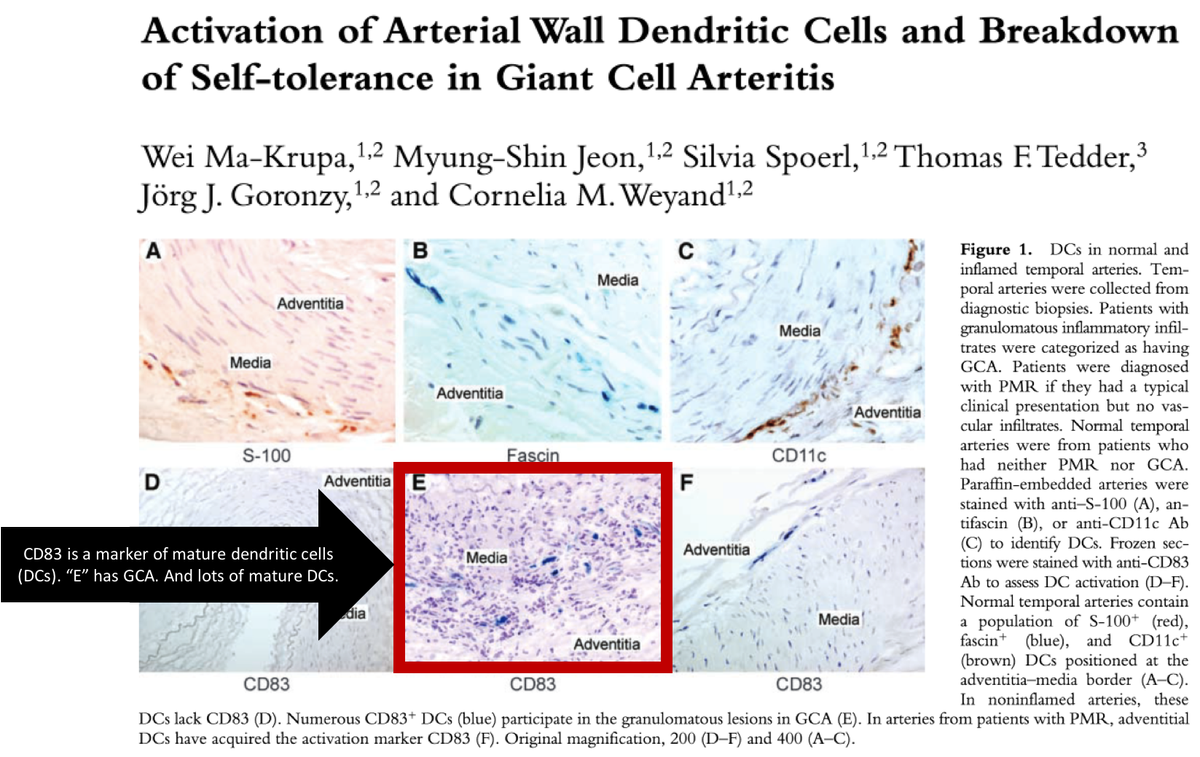
Once triggered by DCs, inflammatory cells (macrophages and T cells) enter via the vasa vasorum and instigate the full inflammatory response.
Ultimately, this leads to intimal involvement, lumenal obstruction, and symptoms.
ncbi.nlm.nih.gov/pubmed/24189842
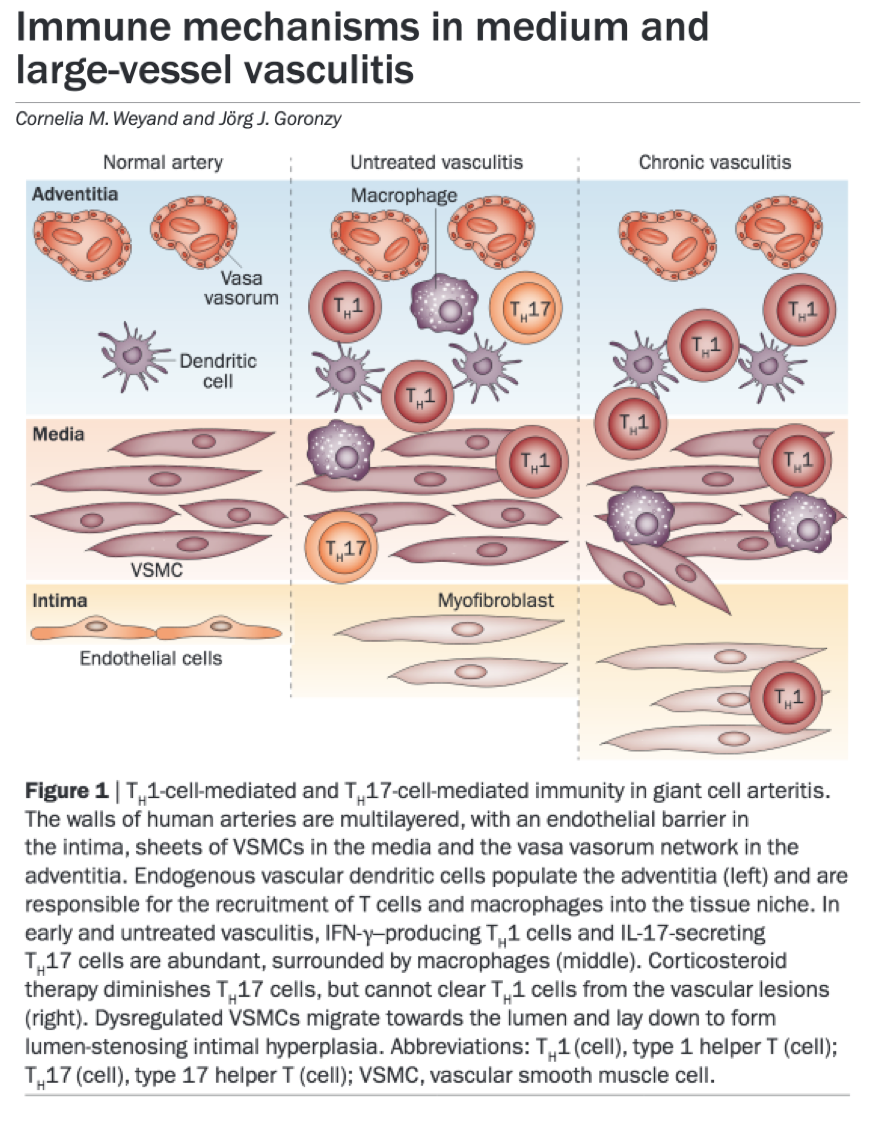
So, in order for GCA to occur, a vessel must have:
*dendritic cells, which are primed (possibly by infections... see 10 below)
*vasa vasorum, a pathway for inflammatory cell entry
But, not all arteries with these characteristics are susceptible to GCA.
Intracranial and mesenteric arteries have DCs embedded in the adventitia. These vessels are at very low risk of GCA.
Why? What's different about mesenteric vessels?
[TLR = toll-like receptor]
Amazingly, blood vessels express different pathogen-sensing toll-like receptors (TLRs) and therefore respond differently.
Vessels located around the gut may be primed to deal with different pathogens than those around the head. How cool is that!
ncbi.nlm.nih.gov/pubmed/18765390
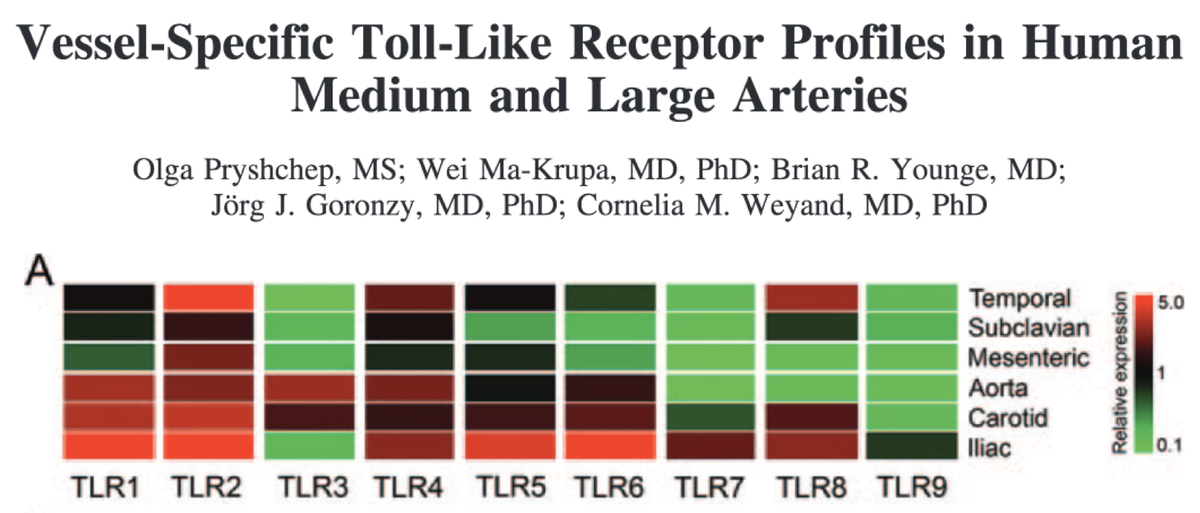
For example, Burkholderia infection may activate DCs in the region of the temporal artery (causing GCA), all the while leaving those in the mesentery quiescent.
ncbi.nlm.nih.gov/pubmed/24827750
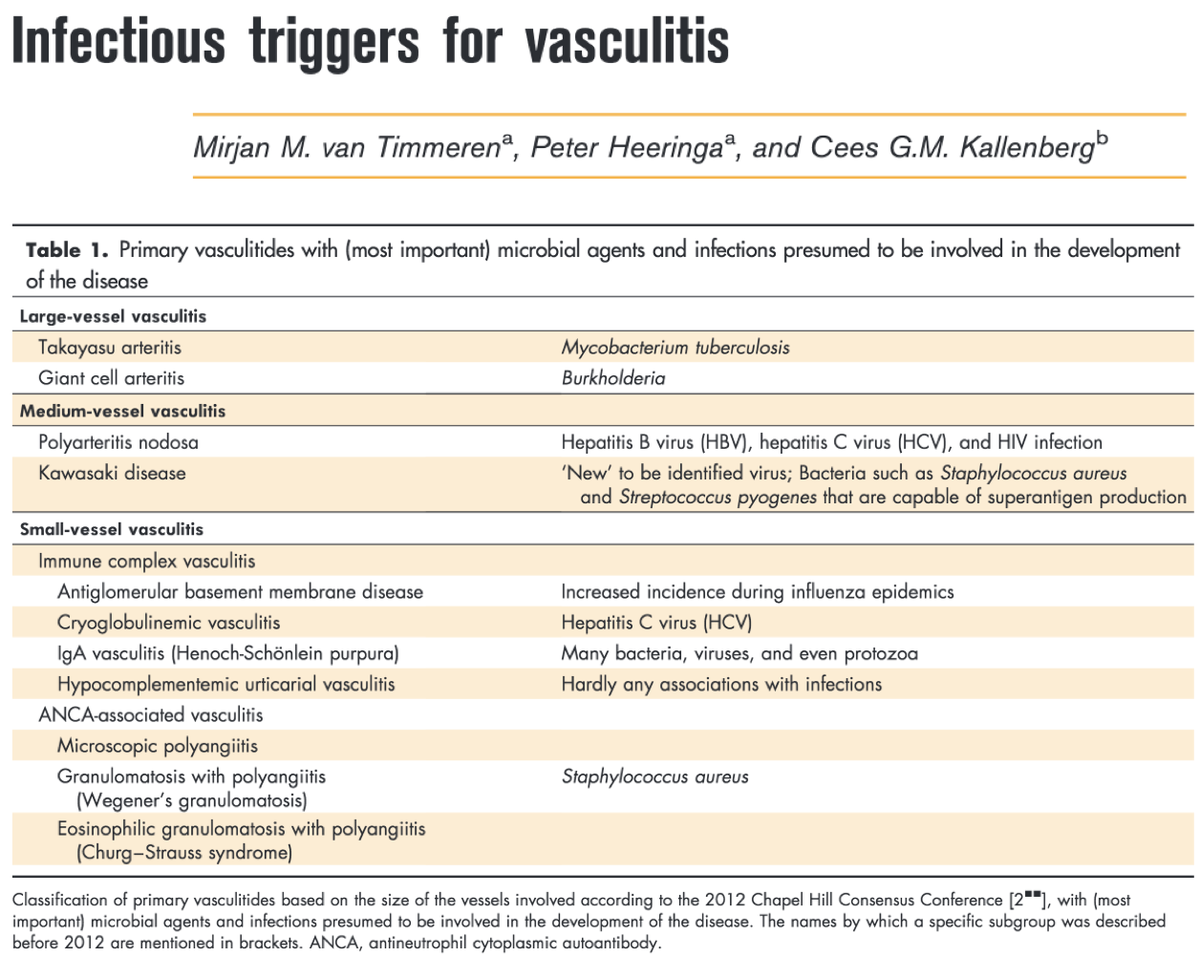
Before closing, let's revisit one of the earlier questions.
In GCA, where does the inflammation initiate? Is it:
*from the lumen, through damage to the endothelial wall (aka INSIDE-out); or
*through the adventitia with subsequent media/intima involvement (aka OUTSIDE-in)?
To sum up, GCA may have tropism for early arteries off the aortic trunk because:
*they contain adventitial DCs;
*these DCs harbor TLRs that react to pathogens in ways that other vessels may not;
*the vasa vasorum allows for subsequent non-lumenal inflammatory cell entry
This, of course, is just skimming the surface of GCA peculiarities/questions.
Others include:
*why does it have such a strict age cut-off? (it is essentially unheard of in those <50)
*what’s with the PMR overlap?
I have NO CLUE regarding the first. Anyone want to chime in?
